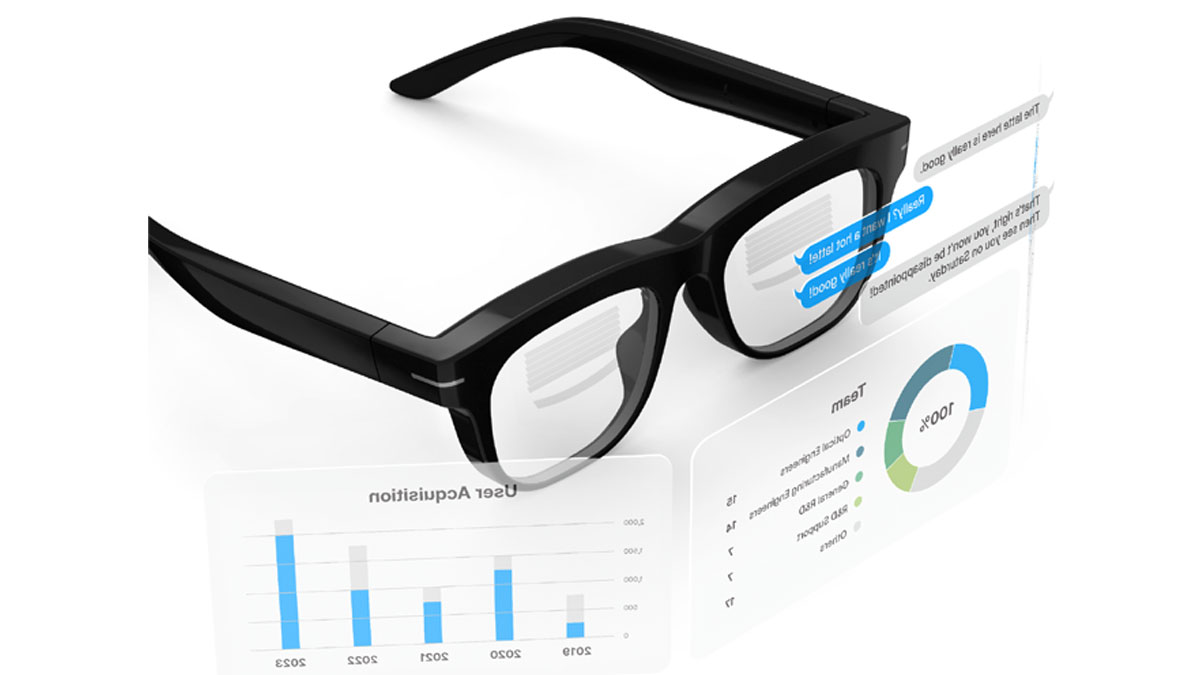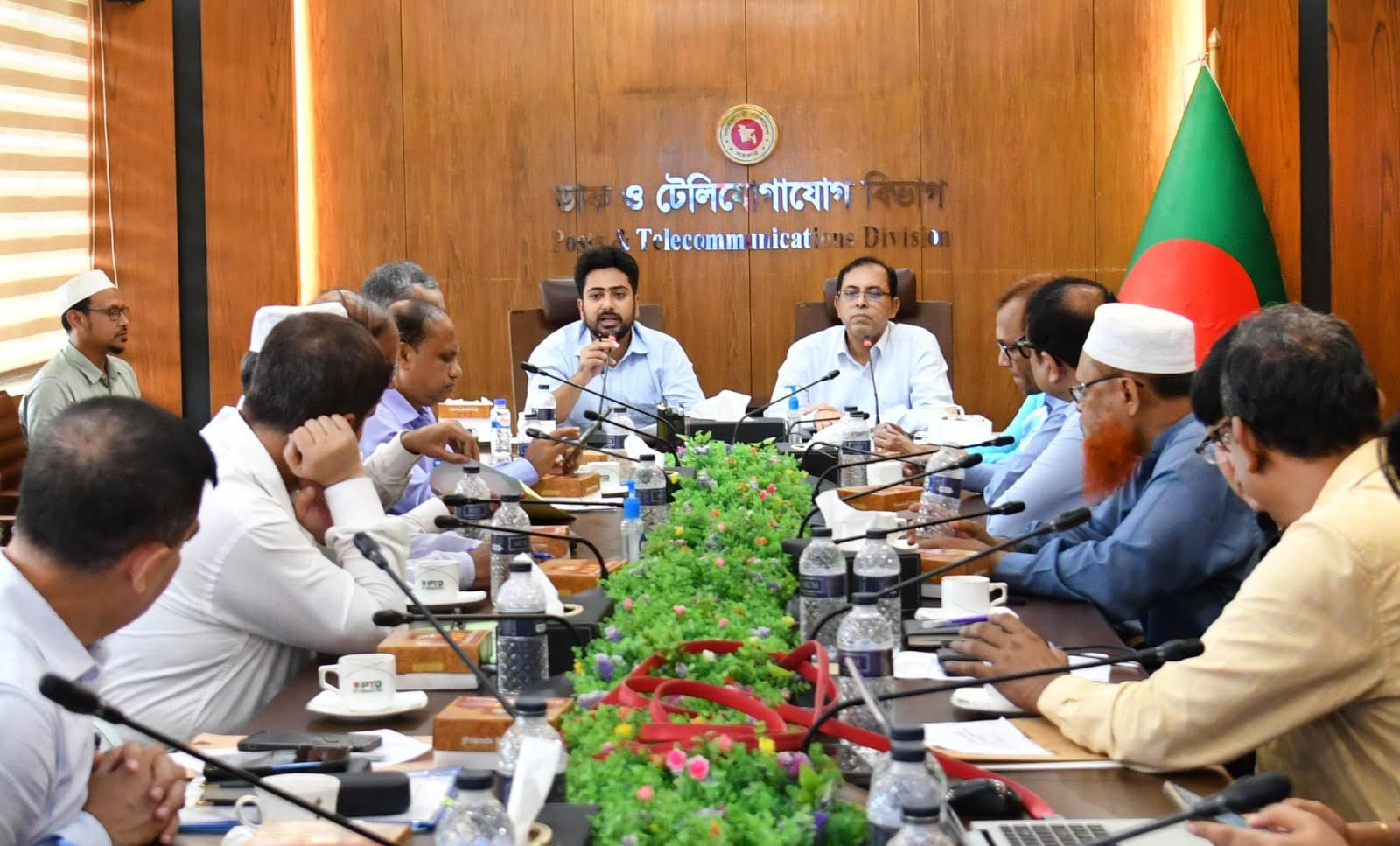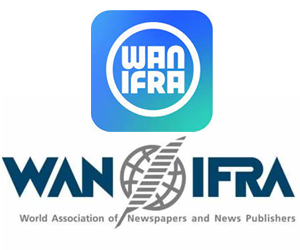Tech
LetinAR introduces multiple AR Smartglasses developed by its global customers in CES 2024
Published
1 year agoon

LetinAR is returning to CES 2024 on January 9-12, 2024, in Las Vegas, USA. The booth, located at 16649 in LVCC Central Hall, will showcase the progress of the most advanced “PinTILT™” Augmented Reality (AR) optical solutions and successful commercialization cases with its customers.
LetinAR Inc. (CEO Kim Jae-hyeok), a developer of optical solutions for Augmented Reality (AR) smart glasses, announced that, at the CES 2024 in Las Vegas, USA, to be held between January 9~12, it will be releasing its “PinTILT™” lens, which brings AR optics to the next level and successful commercialization cases with its global customers including Jorjin, Nimo, and others.
As a developer of optical systems for AR smart glasses, LetinAR introduced its PinTILT™ technology at the CES for the last seven consecutive years. LetinAR drew the attention of global companies as it was recognized for having overcome the performance limitations of the existing AR optical system on the back of its unique and practical technology. LetinAR releases its “FrontiAR™ Pro” optical system based on PinTILT™ technology at CES 2024, which resolves technological barriers and elevates the optical system to the next level.
The strongest feature of the “FrontiAR™ Pro” lens is that it overcomes the issue of brightness uniformity, which has been the greatest challenge to existing PinMR™ (“Pin Mirror™”) AR optical systems. On top of that, the image quality, an existing strength, has been further improved so that it can be easily worn like regular glasses.
At CES 2024, visitors can experience an ultra-high definition, immersive AR demonstration, which is developed based on the PinTILT™ AR optical system. The global customers of LetinAR, mainly Jorjin, a leading XR device manufacturer with more than ten years of experience, introduce J8L Glasses, optimized for spatial experiences based on the LetinAR FrotinAR™ Pro (Formerly B42) optical system. Nimo, the developer of the World’s First Spatial Computer for Productivity, launches Nimo One, also equipped with the LetinAR FrotinAR™ Pro optical system. Additionally, more customers of LetinAR from America and Asia will launch their successful productization cases onsite. All visitors are welcome to experience all the glasses.
The company and its customers plan to exhibit interactive, responsive content that provides the first-hand experience of immersive spatial content. By combining the Generative AI function, Nimo is planning to demonstrate Nimo Glasses, Nimo Core, and OS which are designed for Spatial Productivity and fit in our Pocket. Also receiving the spotlight is Jorjin’s J8L Glasses, which enables an immersive Metaverse experience utilizing 9-Axis IMU and AI recognition software.
Last December, LetinAR’s technological excellence was recognized upon its selection as a finalist, again as it did four years ago, for the PRISM Awards, held by the International Society of Optics and Photonics (SPIE), the most prestigious institution in the field. SPIE shared on its website that it selected LetinAR as a finalist in the category of Vision Technology in “appreciation of the company’s contribution to the development of technology in this world.” The final winner will be announced in San Francisco in February at the Photonics West, one of the largest optics events in the US.
Jaehyeok Kim, CEO of LetinAR, says, “It was LetinAR’s strong technological base that enabled us to not only overcome the limitations of the existing AR optical system but also to overcome the vertical viewing angle issue, which has been regarded as a major technological challenge”, and added that “It is glad to demonstrate diverse smartglasses launched by our global customers all around the world at the CES 2024.”
Lerdah Wang, General Manager of Jorjin, says, “We’re delighted to say that Jorjin’s J8L AR smart glasses powered by outstanding PinTILT™ technology from LetinAR can bring users an incredible experience in special field applications.”, and “The slim design and lightweight can fit for wearing for a long time. With gesture recognition, the human-computing interaction is intuitive and can be used in a wide range of fields such as smart manufacturing, smart showroom, city touring, immersive collaboration and education, and smart medical applications for augmented upgrading and digital transformation.”
Rohildev, CEO of Nimo Planet, says, “At Nimo, our highest priority is to create extremely comfortable and high-quality AR Glasses for Productivity.”, and “Working with LetinAR enabled us to create Beautifully designed glasses with ultra-comfort”.
Yang Sang-hwan, the director of the Naver D2 Startup Factory, explained that “LetinAR’s technology excels to the point that it may earn the PRISM Award by SPIE, the leading authority in the field of optics, and it’s encouraging to see how the company proves to the world its ability to overcome technological challenges.” He went on to say that “LetinAR’s PinTILT™ technology will spearhead the commercialization of AR smart glasses.”
Since its inception in 2016, LetinAR with PinTILT™ technology has been in the global spotlight during the previous CES and MWC. As of late, LetinAR is taking a radical leap towards the next business phase with several global AR companies with FrontiAR™ optical system, the first truly mass-produced AR optics based on plastic injection molding technology. To find out more about the LetinAR or demonstrations at the Consumer Electronics Show (CES), visit https://letinar.com or e-mail sales@letinar.com.
The most influential and award-winning tech journalist based in Dhaka, Bangladesh. President of Bangladesh Tech Journalists umbrella association name Bangladesh ICT Journalist Forum(BIJF).He works for The Daily Ittefaq and is responsible for covering news, editing posts, reviewing devices, producing video reviews, and communicating with the reader base. Journalist, editor, technology, personal technology, reviews, features, analysis, media.

Tech
A10 Networks Expands its Cybersecurity Portfolio with Acquisition of ThreatX Protect
Published
2 months agoon
March 13, 2025
ThreatX Protect Addresses Critical Need to Protect Against Evolving Application and API Security Threats
To continue to help customers address the rapidly evolving cyber threat landscape, A10 Networks has acquired the assets and key personnel of ThreatX Protect expanding its cybersecurity portfolio with web application and API protection (WAAP). The acquisition is expected to be modestly accretive to A10’s earnings per share in 2025 and has closed.
Attacks against web applications and application programming interfaces (APIs) are on the rise and are a significant threat to enterprises. ThreatX Protect provides a unique WAAP solution using behavioral and risk profiling to help protect enterprises from evolving threats, including threats to AI applications, which can complement an AI firewall. Delivered as a software-as-a service solution, ThreatX Protect includes API protection, bot management and next-generation web application firewall.
“Expanding the A10 Defend security portfolio with ThreatX Protect gives our customers an additional tool in their strategy to protect against new and evolving threats,” said Dhrupad Trivedi, president and CEO, A10 Networks. “Our strategic focus is on helping enterprises secure their applications and networks from the growing number of threats today, as well as protecting the emerging AI use cases of the future. Adding WAAP to our solution set gives customers additional capabilities to help establish a strong security posture.”
“We are thrilled that A10 Networks has acquired certain assets of ThreatX, including the brand and the TX Protect WAAP solution to expand A10’s security portfolio,” said Gene Fay, CEO of ThreatX. “A10 has been a fantastic partner throughout this process, and we are confident that our customers and employees will thrive under their leadership.”
As a result of this transition, the remaining assets of ThreatX will be launched as Run Security with TX Prevent, the cutting-edge eBPF-based solution re-launched as RS Prevent.
ThreatX Protect supports A10’s strategy of helping customers deploy A10 security solutions in a hybrid approach to protect apps and APIs running anywhere – public cloud, private cloud, co- location facilities or on-premises. The A10 Defend portfolio of solutions provides DDoS protection, DDoS threat intelligence and web application, and now adds a full-featured WAAP solution all integrated into a single platform with end-to-end delivery and stronger security for mission-critical applications.
Specific terms of the transaction were not disclosed. The acquisition is consistent with A10’s stated strategy of expanding the Company’s security portfolio to grow in the enterprise market. The acquisition does not represent a material change to the Company’s 2025 financial outlook or long-term business model.
Tech
Rampant Corruption Plagues ICT Sector in 15 years : White Paper
Published
6 months agoon
December 3, 2024
Highlights
- ICT sector plagued by corruption
- Hi-Tech parks fail to attract investors
- Lack of transparency in project implementation
- Misuse of funds to benefit preferred vendors
- Calls for robust project evaluations
The White Paper on the State of the Bangladesh Economy, submitted to the Chief Adviser today (1 December), identified the Information and Communication Technology (ICT) sector as one of the most affected by corruption.
“The review of the White Paper puts the banking sector on top of the most corruption-ravaged sectors, followed by physical infrastructure, and energy and power,” it reads.
ICT was also identified as one of the most corruption-affected sectors by its operational and technological novelty, it added.
The White Paper committee’s comment highlights years-long corruption allegations in the key sector the Awami League pledged to improve during the 2008 election for the sake of national progress.
And the story later frustrated the youth and technology experts due to huge waste of taxpayers’ money in improper projects. These lacked transparencies and were alleged to benefit people close to the then regime.
In the one and half decades of Sheikh Hasina’s ruling, the state spent nearly Tk29,000 crore to build “Digital Bangladesh” and later “Smart Bangladesh by 2041.”
Most of the funds were allocated to infrastructure projects, which still require justification from sector experts. For instance, Hi Tech parks outside major cities barely attracted investors.
Government-funded projects aimed at youth ICT training, women empowerment, and local app and game development, costing hundreds of crores of Taka, appear to have primarily benefited officials and their preferred vendors, reveals the gradually unfolding facts.
The interim government in August formed a committee to evaluate the ongoing projects already recommended to downsize them in lots of unjustified cases. It will also dig deeper to find the anomalies in the already finished projects.
In an example of how the government projects were being justified in questioned ways, the white paper mentioned a 2013-18 ICT Division project “Leveraging ICT for Growth, Employment, and Governance Projects” that had a 43% cost increase to Tk774 crore, from its original budget of Tk521.97 crore.
According to the White Paper, the large capacity-building initiative aimed to promote the IT sector and train 30,000 individuals for employment within it. The evaluation report from the Planning Ministry’s Implementation Monitoring and Evaluation Division showed strong satisfaction with the project’s success.
However, it overlooked the contributions of training institutions, colleges, and universities that also played a role in advancing the sector, the White Paper stated.
Additionally, the quality of the evaluation report was inadequate, as it failed to distinguish the marginal impacts of training 30,000 individuals on the entire IT sector.
This analytical weakness in assessing the project’s impacts has contributed to the continuation of various ICT and other projects that lack tangible benefits.
“It highlights the need for more robust evaluations to ensure that future initiatives are grounded in a clear understanding of their actual contributions to the sector,” said the White Paper.
Bangladesh lags behind many comparator countries in a number of technological indexes, despite the digital and smart nation narratives.
Tech
Corruption behind Tk 650bn investment in telecom, ICT sectors
Published
6 months agoon
December 3, 2024
ICT Advisor Nahid Islam has said due to ‘irregularities’, Bangladesh has not realised the full benefits of the ‘Digital Bangladesh’ initiative despite a substantial investment of Tk 650 billion in the telecommunications and ICT sectors under the Awami League government.
Speaking at an ADP review meeting at the Posts and Telecommunication Division on Monday, Nahid criticised the execution of numerous costly projects under the ‘Digital Bangladesh’ banner which, according to him, failed to deliver their promised impact.
From fiscal year 2010-11 to 2024-25, the ICT Division implemented projects worth Tk 250 billion, while the Posts and Telecommunications Division accounted for projects totaling Tk 400 billion.
Despite these investments, Bangladesh scored a modest 62 out of 100 in the June 2024 edition of the ICT Development Index by the United Nations International Telecommunication Union, trailing behind nations such as Myanmar, Sri Lanka, the Maldives, Vietnam, and Bhutan.
Highlighting the country’s technological lag, Nahid referenced the May 2024 Ookla Speedtest Global Index, where Bangladesh ranked 109th out of 147 countries in internet speed, below Kenya.
Also, Bangladesh placed 108th in broadband internet performance, with India, Sri Lanka, Bhutan, Rwanda, and Ghana all performing better.
In the realm of artificial intelligence, the IMF’s June 2024 Artificial Intelligence Preparedness Index placed Bangladesh 113th, again behind India, Sri Lanka, Bhutan, Rwanda, and Ghana.
The Digital Quality of Life Index 2023 by cybersecurity firm Surfshark saw Bangladesh drop five notches to 82nd among 121 countries, with internet speed 5 percent below the global average.
Rankings in the Key Government Index, e-security, and internet purchasing capacity were similarly below par.
Nahid also pointed out that Bangladesh lags in freelancing, ranked 29th among the top 30 global destinations, as per an April 2024 report by US-based CEOWORLD magazine, trailing behind India and Pakistan.
These indicators, according to Nahid, reflect not just the failure to enjoy the full benefits of digital initiatives but also suggest pervasive irregularities in the sector.
He criticised the frequent delays and the need for repeated extensions in project timelines, calling for more sensible proposals regarding extensions.
Nahid emphasised that timely and proper project completion could significantly propel the nation’s progress in internet and telecommunication sectors, benefitting all Bangladeshis.
The meeting disclosed that nine projects are currently underway within the four offices of the Posts and Telecommunications Division for the fiscal year 2024-25, involving entities such as Bangladesh Telecommunications Company Limited, or BTCL, Teletalk Bangladesh Limited, the Directorate of Posts, and Bangladesh Submarine Cables PLC.
As of August 2024, national-level project progress for the fiscal year was reported at 1.02 percent, with the Posts and Telecommunications Division achieving a progress rate of 3.84 percent.

A10 Networks Expands its Cybersecurity Portfolio with Acquisition of ThreatX Protect

Progressive Life Insurance successfully settles claims totaling nearly Tk 40 crore in 2024

Banks see rising deposits for higher interest rates













